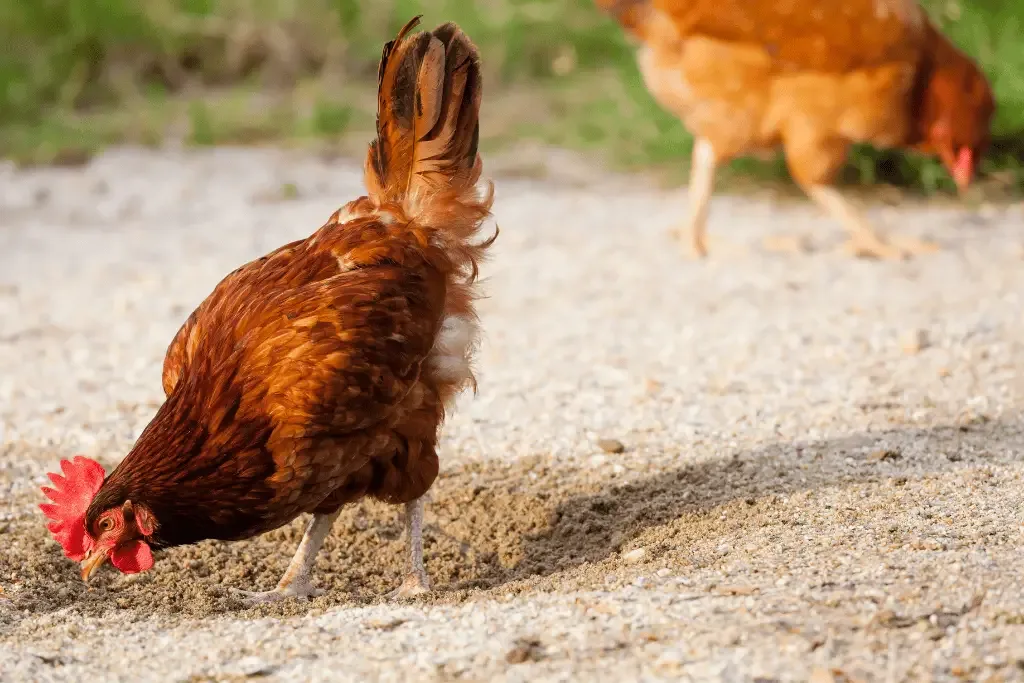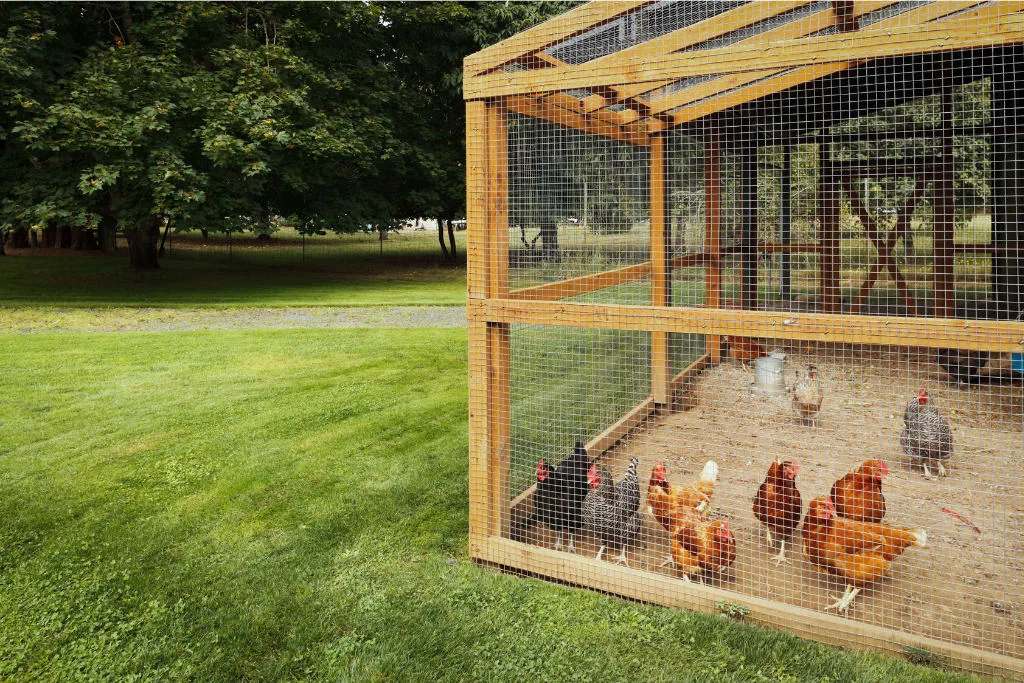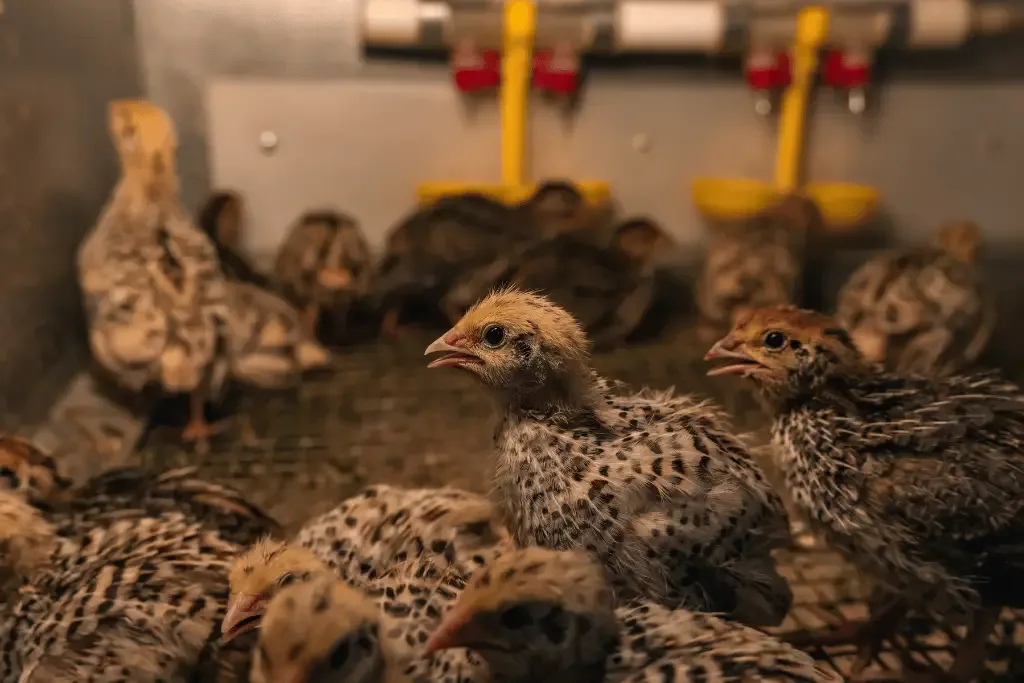Sand for chicken coop bedding has several advantages over traditional bedding materials like straw or wood shavings.
Sand is easy to clean, doesn’t retain moisture, and provides good drainage.
Additionally, sand doesn’t attract pests like mites or lice, and it doesn’t create dust that can cause respiratory problems for chickens.
However, not all sand is suitable for chicken coops.
It is important to know and understand the best types of sand for your chicken coop and how to use it.
In this article, we will discuss:
- The importance of sand for chicken coops
- Choosing the right type of sand for chicken coop
- Benefits of using sand in a chicken coop
- How to use sand in the coop and general maintenance
- Drawbacks to using sand in a chicken coop
- And some frequently asked questions

Understanding the Importance of Sand in a Chicken Coop
Sand is a popular choice for chicken coop bedding, and for good reason.
It offers several benefits that make it an ideal option for chicken keepers.
Here are some reasons why sand is an important component in a chicken coop:
1. Better Drainage
Sand provides better drainage than other bedding materials, such as straw or wood shavings.
This is important because it helps to prevent the buildup of moisture in the coop, which can lead to bacterial growth and unpleasant odors.
Sand allows moisture to pass through it, keeping the coop drier and more hygienic.
2. Cleaner Chicken Feet
Sand can help keep your chickens’ feet clean and healthy.
The abrasive texture of sand helps to wear down their nails naturally, reducing the need for regular trimming.
It also helps to prevent the buildup of manure on their feet, which can lead to health problems.
3. Eco-Friendly
Using sand in your chicken coop is an eco-friendly option.
Unlike other bedding materials, sand can be reused and does not need to be replaced as often.
This reduces waste and saves you money in the long run.
4. Easy to Clean
Cleaning a chicken coop can be a messy and time-consuming task, but using sand can make it much easier.
Sand is easy to scoop and sift, allowing you to quickly remove soiled areas and keep the coop clean and fresh.
5. Lower Ammonia Levels
Ammonia buildup in a chicken coop can be harmful to your chickens’ health.
Sand helps to absorb moisture and reduce the levels of ammonia in the coop, creating a healthier environment for your birds.

Choosing the Right Type of Sand
When it comes to choosing the right type of sand for your chicken coop, there are a few options to consider.
Each type of sand has its own unique qualities, so it’s important to choose the one that will work best for you and your chickens. And some options are better than others.
When choosing the right type of sand for your chicken coop, it’s important to consider factors such as cost, availability, and safety.
River sand and washed sand are both good options, but it’s important to ensure that they are free of impurities that could be harmful to chickens.
Play sand should be avoided due to its potential health risks.
Let’s take a look at the three most common types of sand for chicken coops:
River Sand
River sand is a popular choice for chicken coops because it is a natural material that is readily available in many areas.
It is made up of a variety of particle sizes, including small stones, which makes it great for grit intake in birds.
River sand also has good drainage properties, which can help keep the coop clean and dry.
However, it can be more expensive than other types of sand and may contain impurities that can be harmful to chickens.
Washed Sand
Washed sand is another option for chicken coops.
As the name suggests, this type of sand has been washed to remove any impurities and is therefore cleaner than some other types of sand.
It is also finer in texture, which can be easier for chickens to walk on.
However, washed sand can be more expensive than other types of sand and may not be readily available in all areas.
Play Sand
Play sand is a type of sand that is often used in children’s sandboxes.
While it may seem like a good option for chicken coops, it is generally not recommended.
Play sand is usually made of crushed quartz or silica, which can be harmful to chickens if ingested.
It is also finer in texture than other types of sand, which can make it more difficult to clean and maintain.

Where to Buy Sand For Chicken Coop
You may be able to find sand from a local home improvement store or hardware shop, however, they may not have the right type of sand for your chicken coop.
If not, make sure to check out your local construction supply companies.
They will typically have a wider variety of sand to choose from that would work better as chicken coop bedding.
Benefits of Using Sand in a Chicken Coop
Using sand in a chicken coop has become a popular bedding choice among poultry keepers.
Here are some of the benefits of using sand in a chicken coop.
Easy to Clean
One of the main advantages of using sand in a chicken coop is that it is easy to clean.
Unlike other bedding materials, sand does not retain moisture, which means that it is less likely to develop bad odors and bacteria.
Sand can be easily scooped up and sifted to remove any droppings or debris, leaving a clean and hygienic surface for your chickens.
Parasite Control
Sand can also help control parasites in a chicken coop.
Parasites such as mites and lice can hide in the crevices of traditional bedding materials like straw or wood shavings.
Sand, on the other hand, provides a less hospitable environment for these pests, making it harder for them to survive and reproduce.
This can help keep your chickens healthy and free from infestations.
Odor Control
Another benefit of using sand in a chicken coop is that it helps control odors.
As mentioned earlier, sand does not retain moisture, which means that it is less likely to develop bad odors and bacteria.
This can help keep your coop smelling fresh and clean, even with multiple chickens living in close quarters.
Comfort and Entertainment for Chickens
Using sand in a chicken coop can also provide comfort and entertainment for your chickens.
Sand provides a soft and cushioned surface for your chickens to walk and scratch around on.
It can also be used to create dust baths, which chickens love to use to keep themselves clean and healthy.
Additionally, sand can be used to create interesting terrain features in your coop, such as hills and valleys, which can provide your chickens with a fun and stimulating environment.
Potential Drawbacks of Using Sand
While sand can be a great choice of bedding material for chicken coops, there are some potential drawbacks that should be considered before making the decision to use it.
Dust Issues
One of the biggest concerns with using sand is the dust it can generate.
Chickens naturally scratch and peck at the ground, which can cause the sand to become airborne and create a dusty environment.
This dust can be harmful to both chickens and humans, causing respiratory issues and other health problems.
To mitigate this issue, it’s important to keep the sand moist and well-maintained. Adding a layer of straw or other organic material on top of the sand can also help to reduce dust.
Cost Considerations
Another potential drawback of using sand is the cost. While sand can be relatively inexpensive, it may require more frequent replacement than other bedding materials.
Additionally, the initial cost of setting up a sand-based coop or run can be higher than other options.
It’s important to consider the long-term costs and benefits of using sand, as well as the specific needs of your flock, before making a decision.
How to Add Sand to a Chicken Coop
Adding sand to a chicken coop can be a great way to improve the health and cleanliness of your flock.
Here are some steps to follow when adding sand to your coop.
Determining the Amount of Sand Needed
Before adding sand to your chicken coop, you will need to determine how much sand you will need.
The amount of sand required will depend on the size of your coop and run.
You can use the following formula to calculate the amount of sand needed:
- Length x Width x Depth = Volume
- Volume / 27 = Cubic Yards
- Cubic Yards x 1.4 = Tons of Sand Needed
Once you have calculated the amount of sand needed, you can purchase the sand from a local supplier.
Proper Placement of Sand
When adding sand to your chicken coop, it is important to place it in the right location.
The sand should be placed in the run and the coop floor.
The sand should be at least 4-6 inches deep in the run and 1-2 inches deep in the coop.
To properly place the sand, follow these steps:
- Remove all existing bedding and debris from the coop and run.
- Level the ground as much as possible.
- Add the sand to the run and coop floor, making sure to spread it evenly.
- Use a rake or shovel to level the sand.
It is important to note that the sand should be replaced every 6-12 months or as needed.
Additionally, it is important to provide your chickens with a shaded area in the run to prevent the sand from becoming too hot in the summer months.
By following these steps, you can successfully add sand to your chicken coop and improve the health and cleanliness of your flock.
Can I Use Sand in My Brooder?
It is best to not use sand inside your brooder with young chicks.
Little ones don’t quite know what they should or shouldn’t eat yet.
Using any other type of bedding besides paper towels can potentially harm your baby chicks if they consume it.

Maintenance of Sand in a Chicken Coop
Maintaining sand in a chicken coop is essential to keep the coop clean and healthy for your chickens. Here are some tips on how to properly maintain sand in your chicken coop.
Regular Raking
Raking the sand regularly is an important part of maintaining the cleanliness of the coop.
It helps to remove any droppings and other debris that may accumulate on the surface.
A rake with long, widely spaced tines is ideal for this purpose.
It is recommended to rake the sand at least once a day, preferably in the morning.
This will help to keep the coop fresh and odor-free.
If you notice any areas of the sand that are particularly soiled, rake those areas more thoroughly.
Replacing the Sand
Replacing the sand periodically is necessary to keep the coop clean and healthy.
The frequency of sand replacement depends on various factors, such as the number of chickens, the size of the coop, and the climate.
As a general rule, it is recommended to replace the sand every six months to a year.
However, if you notice any signs of mold, mildew, or other bacterial growth, you should replace the sand immediately.
When replacing the sand, it is important to remove all of the old sand and dispose of it properly.
Then, thoroughly clean the coop and allow it to dry completely before adding fresh sand.
Final Thoughts
After considering the pros and cons of using sand as bedding material for a chicken coop, there are a few things to keep in mind before making a decision.
Firstly, it’s important to choose the right type of sand.
Medium to coarse sand with good drainage is the best option, while play sand should be avoided due to the risk of crop impaction and respiratory illness.
Secondly, it’s important to ensure that the sand is cleaned regularly to prevent the buildup of bacteria and unpleasant odors. This can be done easily with a rake or shovel.
Lastly, while sand can be a great option for a chicken coop, it’s not the only option.
Other bedding materials such as straw or hay can also be effective and may be better suited for certain situations.
Ultimately, the decision to use sand in a chicken coop will depend on what is best for you and your chickens.
With proper care and attention, sand can provide a comfortable and healthy environment for chickens to thrive.
Frequently Asked Questions
What type of sand is best for chicken coops?
The best sand for chicken coops should have large to medium-sized grains.
Avoid using desert sand or debris sand that is swept as waste after construction.
Sand with a grain size ranging from medium to coarse provides great chicken coop bedding when used in coops that do not have draining issues and do not get damp inside.
Is sand safe for chicken coop?
Yes, sand is safe for chicken coops.
It is an excellent bedding material as it dries out the poop, reduces bacteria, and does not retain moisture, providing better drainage.
However, it is important to ensure that the sand is clean and does not contain any harmful chemicals or toxins.
Can I use Quikrete sand for chicken coop?
No, it is not recommended to use Quikrete sand for chicken coops.
Quikrete sand is not designed to be used as bedding material for chickens and may contain harmful chemicals that can be dangerous to the birds.
How do you keep sand in a chicken run?
To keep sand in a chicken run, you can create a border around the run using landscape timbers, bricks, or stones.
This will help to keep the sand contained and prevent it from spilling out of the run.
Additionally, you can add a layer of gravel or crushed stone underneath the sand to improve drainage and prevent the sand from becoming muddy.
What is the best bedding for chicken coop?
The best bedding for chicken coops is a matter of personal preference.
While sand is an excellent choice, other options include straw, wood shavings, and shredded paper.
However, it is important to ensure that the bedding is clean, dry, and free from any harmful chemicals or toxins.
How to clean sand in chicken coop?
To clean sand in a chicken coop, you can use a rake to remove any large debris or clumps of poop.
Then, use a fine-mesh sieve to sift the sand and remove any remaining debris.
Finally, spray the sand with a solution of white vinegar and water to sanitize it and reduce bacteria.

